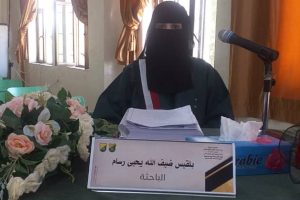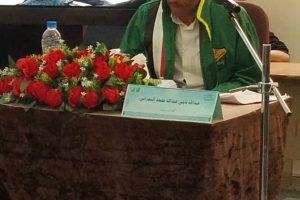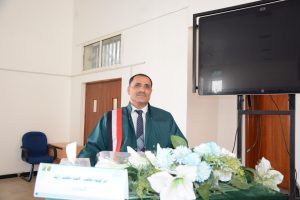Public PhD Viva-Voce Examination of Mr. Mohammad Ahmad Ahmad Al-Ali, from the Department of Archaeology and Tourism, Faculty of Arts & Humanities – Sana’a University
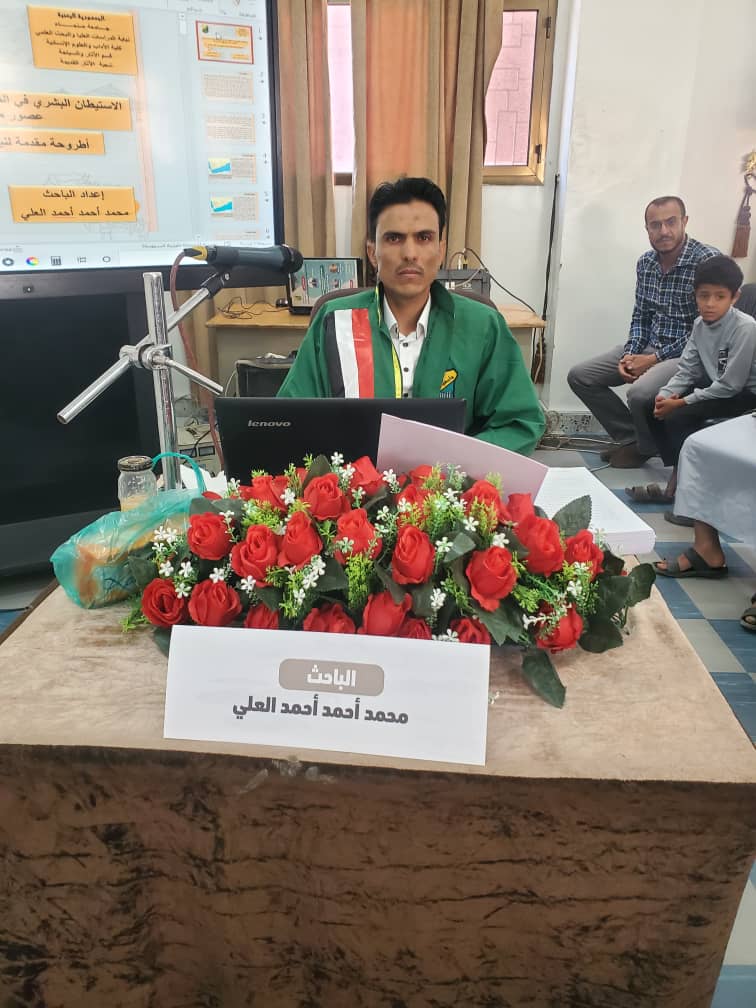
Public PhD Viva-Voce Examination of Mr. Mohammad Ahmad Ahmad Al-Ali, from the Department of Archaeology and Tourism, Faculty of Arts & Humanities – Sana’a University
Mr. Mohammad Ahmad Ahmad Al-Ali has successfully awarded a PhD Degree from the Department of Archaeology and Tourism, majoring in Ancient Archaeology and Pre-historic Eras, from the Faculty of Arts & Humanities – Sana’a University. His dissertation, titled “Human Settlement in the Northeastern Region of the Sana’a Basin during Prehistoric Ages: An Archaeological Study ,” was defended on Monday, 2 Jumada Al-Awwal 1446 Hijri, corresponding to April 11, 2024.
The Viva-Voce Committee, which was formed based on a resolution issued by the Post-Graduate Studies and Scientific Research Council, consisted of the following:
1. Prof. Munir Abdul Jalil Al-Ariqi, External Examiner, Ibb University, Chair.
2. Prof. Abdul Hakim Shaif Mohammad, Main Supervisor, Sana’a University, Member.
3. Prof. Mohammad Saad Al-Qahtani, Internal Examiner, Sana’a University, Member.
The primary objective of the thesis was to catalog and document archaeological sites within the northeastern region of the Sana’a Basin, assess the nature of human settlement in these areas, classify archaeological findings, and establish their chronological context. The research yielded several significant findings, including the identification of numerous archaeological sites situated on the slopes of highlands and plateaus adjacent to valleys and agricultural lands. These sites were classified based on their characteristics into various categories, including residential settlements, burial grounds, rock art and inscriptions, water management facilities, agricultural fields, and terraces.
The study confirmed that the region experienced a persistent humid climate from the sixth millennium BC until the third millennium BC, after which a gradual shift toward aridity began. It highlighted a diversity in settlement patterns; for instance, Nehm area was characterized by small settlements ranging in size from half a hectare to one and a half hectares. These settlements typically consisted of one to three dwellings, often constructed as individual units with layouts that included single-room or two-room structures arranged in semi-circular or oval forms. This pattern suggests a societal fragmentation into independent family groups forming small villages.
Conversely, Arhab area exhibited both small settlements of less than one hectare and larger settlements exceeding four hectares, which included extensive agricultural villages or small towns. The complexity and organization of these planning units indicated an increase in population density and a higher level of social organization. This transformation was reflected architecturally through a shift from oval or circular dwellings to rectangular structures, signifying economic and social changes associated with pastoralism and agriculture, while remnants of hunting practices continued in a secondary capacity.
The study also illustrated an evolution in the living conditions of communities in the region, transitioning from a reliance on gathering and hunting to agriculture and animal husbandry. This economic shift was supported by advancements in the production of stone and pottery tools, encompassing a variety of implements such as sharp points, blades, scrapers, awls, drills, and fragments. The pottery artifacts included coarse to fine wares, comprising bowls, jars, and pots predominantly made by hand, with some fine pieces produced using a potter’s wheel. Notably, it was established that the clay used for pottery production and tools for grinding and crushing grains were sourced locally. These activities were carried out by specialized groups of craftsmen, underscoring the development of skilled labor in prehistoric societies.
The research demonstrated the presence of diverse burial patterns, including both cumulus and tower styles, which signify a range of burial practices and reflect beliefs in resurrection, immortality, and the veneration of ancestors. Additionally, the study documented an extensive collection of rock engravings and graffiti that suggest elements of religious belief, as evidenced by depictions of hunting scenes and animal figures, such as ibex, on the pillars at the entrances of dwellings in Wadi Al-Mahshash. The research also identified several deities associated with the region, including Sama’a and Taalab Riyam.
Furthermore, the findings indicated that the predominant cultural pattern in this area mirrors those found throughout the western, central, and eastern highlands of Yemen.
In his dissertation, the researcher proposed several recommendations, emphasizing the necessity for experimental probes in various dwellings, cemeteries, and soil samples to better understand the environmental, cultural, social, and religious dimensions associated with these sites. The researcher also highlighted the urgent need to protect archaeological sites from destruction and degradation, advocating for their preservation and raising awareness regarding their cultural and civilizational significance.
The Viva-Voce was attended by several academics, researchers, students, and several colleagues and family members of the researcher
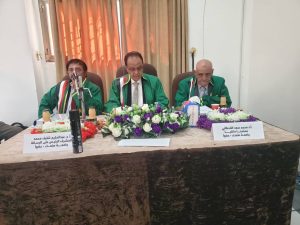
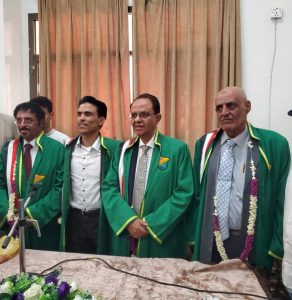
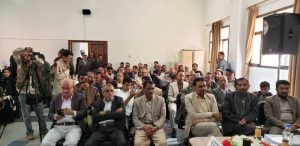
A video from the Viva-Voce

